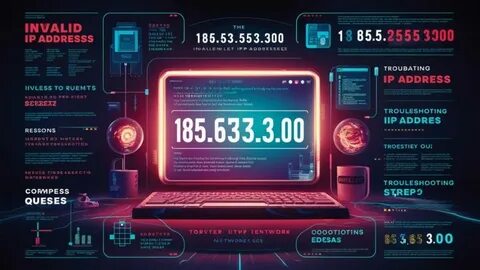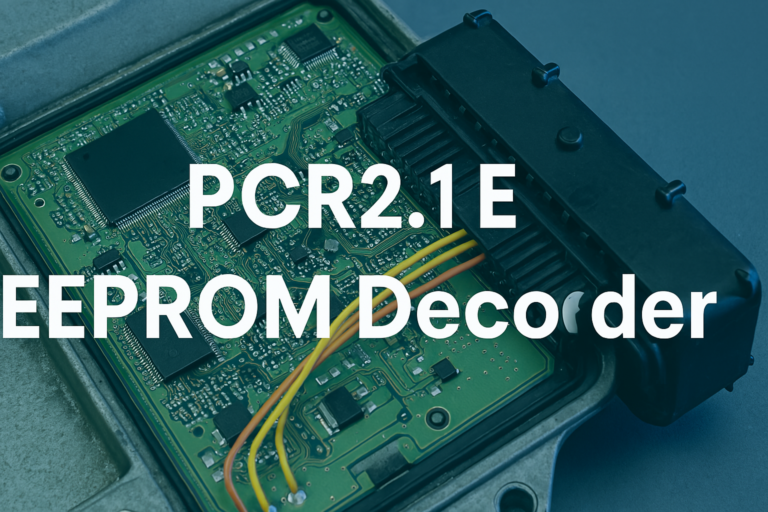Introduction to 185.63.2253.200
In the vast landscape of modern networking, IP addresses serve as the foundational identifiers that allow devices to communicate across the internet. Imagine them as digital postal codes, directing data packets from one point to another with precision. But what happens when an IP address doesn’t follow the rules? Enter 185.63.2253.200—an intriguing example that appears legitimate at first glance but harbors a critical flaw. This article delves deep into this specific IP, using it as a lens to explore the intricacies of IP addressing, the reasons behind invalid formats, and the broader implications for networking and cybersecurity.
The journey begins with understanding why IP addresses matter so profoundly in our connected world. From streaming videos to conducting online transactions, every interaction relies on these numerical labels. Yet, not all IPs are created equal, and invalid ones like 185.63.2253.200 highlight the importance of adhering to strict protocols. We’ll unpack its structure, explain why it’s invalid, and discuss real-world consequences, all while providing educational insights for beginners and experts alike.
Table of Contents
Introduction to 185.63.2253.200
The Importance of IP Addresses in Modern Networking
Why This Specific Example Stands Out
A Real-World Analogy for Invalid IPs
How IP Addresses Are Structured and Why Rules Exist
The Risks of Using Invalid IP Addresses
Why It’s Easy to Miss Invalid IPs
The Educational Value of an Invalid IP
The Bigger Picture — IPv4 Exhaustion and IPv6
Setting the Stage for the Rest of This Article
What is 185.63.2253.200?
Why is this IP format significant?
Common misconceptions about IP addresses
Basics of IP Addresses
IPv4 vs IPv6 – The Core Difference
Structure of IPv4 addresses
Structure of IPv6 addresses
Public vs Private IP addresses
Examples of private IP ranges
Why some IPs are invalid
Analyzing 185.63.2253.200
Why 2253 is an invalid octet in IPv4
Possible reasons for incorrect IP representation
Typographical errors in networking
Misuse in documentation or examples
IP Address Formatting Rules
Octet limits (0–255) explained
Binary representation of IP addresses
How subnetting works
Correcting an Invalid IP
Finding the intended correct IP
Using online IP lookup tools
Network troubleshooting basics
How to trace a working IP address
Real-World Implications of Invalid IPs
Technical issues in software and servers
Confusion in cybersecurity reports
Risks in misconfigured firewalls
IP Address Best Practices
Verifying IPs before use
Using reserved examples for documentation
Avoiding accidental exposure of real IPs
Conclusion
FAQ’s
1. What is the range of valid IPv4 addresses?
2. Can an IP like 185.63.2253.200 ever exist?
3. How do I find my correct IP address?
4. What happens if I use an invalid IP in a system?
5. Are there safe example IPs for teaching?
The Importance of IP Addresses in Modern Networking
IP addresses are the unsung heroes of the internet, enabling seamless connectivity in an era where billions of devices are online. Without them, the web as we know it would collapse into chaos. Each IP acts as a unique identifier, much like a phone number, ensuring data reaches its intended destination. In modern networking, IPs facilitate everything from email delivery to cloud computing, underpinning protocols like TCP/IP that form the backbone of the internet.
As networks grow more complex with IoT devices, smart homes, and remote work, the role of IPs has evolved. They not only route traffic but also play key roles in security, geolocation, and resource allocation. However, the finite nature of IPv4 addresses—limited to about 4.3 billion unique combinations—has led to innovations like NAT (Network Address Translation) and the transition to IPv6. Understanding IPs is crucial for IT professionals, developers, and even everyday users who troubleshoot their home networks.
Why This Specific Example Stands Out
What makes 185.63.2253.200 particularly noteworthy? At a superficial level, it looks like a standard IPv4 address: four numbers separated by dots. But the third octet, 2253, shatters the illusion. In IPv4, each octet must range from 0 to 255, making 2253 blatantly invalid. This example stands out because it exemplifies how a small error can disrupt entire systems, serving as a teaching tool for networking fundamentals.
Read also:185 63 2253 200
Unlike random invalid IPs, this one mimics real addresses closely enough to fool the untrained eye, often appearing in misconfigured scripts, documentation errors, or even phishing attempts. It highlights the human element in technology—typos, misunderstandings, or deliberate deceptions that lead to invalid formats. By dissecting it, we gain insights into broader issues like IP exhaustion and the need for rigorous validation.
A Real-World Analogy for Invalid IPs
Think of an IP address as a street address on an envelope. A valid one, like “123 Main St, Anytown, USA,” gets your mail delivered efficiently. Now, imagine writing “123 Main St, Anytown, Planet Mars”—it’s structured similarly but fundamentally flawed because “Planet Mars” isn’t a valid postal code on Earth. Similarly, 185.63.2253.200 follows the dotted format but violates octet limits, rendering it undeliverable in the digital realm.
This analogy extends to consequences: just as a wrong address leads to returned mail, an invalid IP causes network failures, undelivered packets, or security breaches. In everyday scenarios, like setting up a printer or configuring a router, entering an invalid IP might seem harmless but can lead to hours of frustration, akin to mailing a letter to a nonexistent location.
How IP Addresses Are Structured and Why Rules Exist
IP addresses follow rigid structures to ensure compatibility and efficiency. IPv4, the most common version, consists of 32 bits divided into four 8-bit octets, represented in decimal as xxx.xxx.xxx.xxx. Each octet’s value is constrained to 0-255 because 2^8 = 256 possibilities (0 inclusive). These rules exist to standardize communication, prevent overlaps, and optimize routing.
Rules also govern classes (A through E) for allocation, with Class A for large networks and Class E reserved. Subnet masks further divide networks, allowing efficient use of addresses. Without these structures, the internet would be a disorganized mess, with data packets lost in transit. The evolution from IPv4 to IPv6 addresses these limitations by expanding to 128 bits, but the foundational principles remain: structure ensures order.
The Risks of Using Invalid IP Addresses
Using an invalid IP like 185.63.2253.200 isn’t just a minor glitch; it poses tangible risks. In software applications, it can crash programs expecting valid input, leading to denial-of-service scenarios. For servers, misconfigured IPs disrupt connectivity, causing downtime that costs businesses millions.
Security-wise, invalid IPs can mask malicious activities. Attackers might use them in spoofing attacks to evade detection, or in phishing sites to confuse users. Firewalls and intrusion detection systems may flag them, but if overlooked, they could expose vulnerabilities. In critical infrastructure, like healthcare or finance, such errors might compromise data integrity, leading to breaches or regulatory violations.
Why It’s Easy to Miss Invalid IPs
Human error is the primary culprit. In a sea of numbers, spotting 2253 amid 185.63.xxx.200 requires vigilance, especially under pressure. Automated tools often validate IPs, but manual entry in configs or docs slips through. Novices unfamiliar with octet limits might assume larger numbers are fine, mistaking IPs for arbitrary identifiers.
Documentation often uses placeholders without clear warnings, propagating errors. In fast-paced environments, like DevOps, quick copy-pastes from unreliable sources exacerbate the issue. Even experienced admins can overlook them during migrations or when dealing with legacy systems, where invalid IPs lurk in old code.
The Educational Value of an Invalid IP
Invalid IPs like 185.63.2253.200 are goldmines for learning. They force us to revisit basics: binary math, octet boundaries, and validation logic. In classrooms, they illustrate why protocols exist, sparking discussions on IPv4 limits and IPv6 adoption.
For self-learners, troubleshooting such IPs builds problem-solving skills. Online forums abound with stories of “mysterious” network issues traced to invalid formats, teaching persistence. Educators use them to demonstrate real-world applications of math—converting 2253 to binary (100011001001, which exceeds 8 bits) shows why it’s impossible in IPv4.
The Bigger Picture — IPv4 Exhaustion and IPv6
IPv4’s 4.3 billion addresses are nearly depleted, thanks to the explosion of devices. This exhaustion drives the shift to IPv6, with its 340 undecillion addresses. IPv6 uses hexadecimal notation (e.g., 2001:db8::1), eliminating octet limits but introducing new complexities.
The transition is uneven; many systems still rely on IPv4, using techniques like dual-stacking. Invalid IPs underscore exhaustion’s urgency—if we can’t manage existing addresses properly, how will we handle the vast IPv6 space? It also highlights sustainability in tech: efficient allocation prevents waste.
Setting the Stage for the Rest of This Article
Having introduced the concept and context, we’ll now dive deeper into what 185.63.2253.200 truly is, its analysis, corrections, implications, best practices, and FAQs. This structured exploration aims to equip readers with knowledge to navigate IP-related challenges confidently.
What is 185.63.2253.200?
At its core, 185.63.2253.200 is an attempt at an IPv4 address that fails due to the third octet exceeding 255. It’s not a real, routable IP but a fictional or erroneous one, often seen in typos or illustrative examples. In networking terms, it’s parsed as four parts, but the invalid octet makes it unusable for any protocol.
This “IP” might originate from misentered data, like confusing it with a port number or version string. It’s significant as a case study in validation, reminding us that not every dotted quad is valid.
Why is this IP format significant?
Its significance lies in exposing gaps in understanding. It challenges assumptions about IP flexibility, emphasizing strict rules. In documentation, such formats warn against blind copying. For cybersecurity, recognizing invalid IPs helps detect anomalies in logs, potentially flagging attacks.
Educationally, it bridges theory and practice, showing how abstract rules impact real systems. In a world shifting to IPv6, it reminds us of IPv4’s legacy constraints.
Common misconceptions about IP addresses
Many believe IPs are infinite or that any number works if formatted correctly—no, limits apply. Another myth: private IPs are “fake”—they’re real but not routable publicly. Some think IPv6 replaces IPv4 entirely; it’s complementary. Misconceptions also include IPs being permanent; they’re often dynamic via DHCP.
Basics of IP Addresses
IP stands for Internet Protocol, defining how data is sent/received. Addresses are numerical labels assigned to devices.
IPv4 vs IPv6 – The Core Difference
IPv4 uses 32 bits (e.g., 192.168.1.1), IPv6 128 bits (e.g., 2001:0db8:85a3:0000:0000:8a2e:0370:7334). IPv4 is simpler but scarce; IPv6 abundant but complex.
Structure of IPv4 addresses
Four octets, each 0-255, in dotted decimal. Binary: 10111001.00111111.100011001001.11001000—but wait, 2253 binary is too long.
Structure of IPv6 addresses
Eight hexadecimal groups separated by colons, compressible with :: for zeros.
Public vs Private IP addresses
Public are globally unique, assigned by IANA; private (e.g., 10.0.0.0/8) for internal networks, not internet-routable.
Examples of private IP ranges
- 10.0.0.0 to 10.255.255.255
- 172.16.0.0 to 172.31.255.255
- 192.168.0.0 to 192.168.255.255
Why some IPs are invalid
They violate rules: octets >255, reserved ranges misused, or malformed formats.
Analyzing 185.63.2253.200
Breaking it down: 185 (valid, Class B), 63 (valid), 2253 (invalid, >255), 200 (valid). The third octet is the problem.
Why 2253 is an invalid octet in IPv4
An octet is 8 bits, max 11111111 binary = 255 decimal. 2253 is 100011001001 binary = 12 bits, impossible.
Possible reasons for incorrect IP representation
Could be a typo (meant 225.3), software bug, or deliberate obfuscation.
Typographical errors in networking
Common in configs: fat-fingering keys, copy-paste fails.
Misuse in documentation or examples
Docs might use invalid IPs to avoid real ones, but without notes, confusion ensues.
IP Address Formatting Rules
Octet limits (0–255) explained
Derived from 8-bit bytes; 0 for network, 255 for broadcast in some contexts.
Binary representation of IP addresses
Each octet binary, concatenated to 32 bits.
How subnetting works
Divides networks using masks (e.g., /24 = 255.255.255.0), allocating hosts efficiently.
Correcting an Invalid IP
Finding the intended correct IP
Guess intent: perhaps 185.63.253.200 (253<255) or 185.63.225.3200—but latter invalid too.
Using online IP lookup tools
Tools like WhatIsMyIP or IPVoid validate and geolocate valid ones.
Network troubleshooting basics
Use ping, traceroute; for invalid, errors like “invalid argument.”
How to trace a working IP address
Traceroute shows hops; whois for ownership.
Real-World Implications of Invalid IPs
Technical issues in software and servers
Crashes in apps, failed connections.
Confusion in cybersecurity reports
Logs with invalid IPs mislead analysts.
Risks in misconfigured firewalls
Rules for invalid IPs might block legit traffic or allow exploits.
IP Address Best Practices
Verifying IPs before use
Use regex: ^((25[0-5]|2[0-4][0-9]|[01]?[0-9][0-9]?).){3}(25[0-5]|2[0-4][0-9]|[01]?[0-9][0-9]?)$
Using reserved examples for documentation
Like 192.0.2.0/24 (TEST-NET-1) per RFC.
Avoiding accidental exposure of real IPs
Mask them in public shares.
Conclusion
Invalid IPs like 185.63.2253.200 remind us of networking’s precision. By understanding structures, risks, and best practices, we build resilient systems. As we transition to IPv6, these lessons endure.
FAQ’s
1. What is the range of valid IPv4 addresses?
0.0.0.0 to 255.255.255.255, excluding reserved.
2. Can an IP like 185.63.2253.200 ever exist?
No, due to octet limit.
3. How do I find my correct IP address?
Use ipconfig (Windows), ifconfig (Linux), or sites like whatismyip.com.
4. What happens if I use an invalid IP in a system?
Errors, failed comms, potential crashes.
5. Are there safe example IPs for teaching?
Yes, RFC 5737 reserves 192.0.2.0/24, 198.51.100.0/24, 203.0.113.0/24.
Decoding 185.63.2253.200: A Deep Dive into Invalid IP Addresses and Their Impact on Networking







